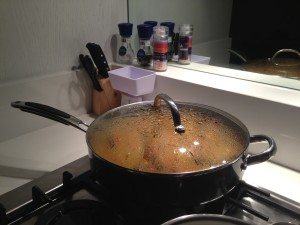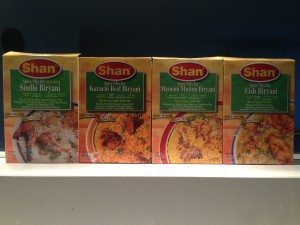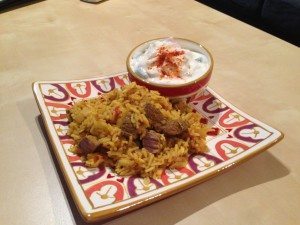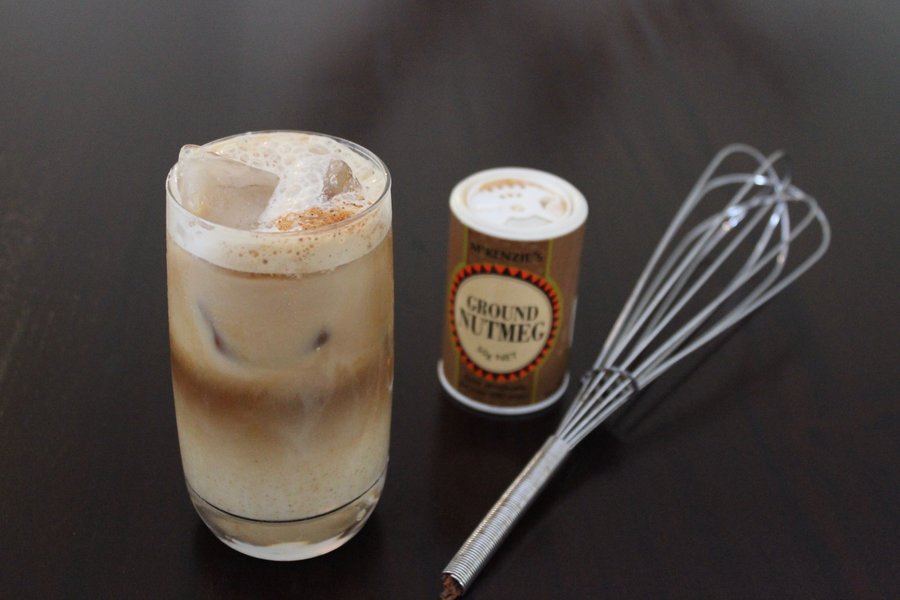India’s Muslim rulers, the Mughal dynasty, contributed some of the subcontinents most beautiful and celebrated icons. Among them are the Taj Mahal, beautiful devotional Qawwali music, and of course biryani. Biryani is a fragrant, semi-steamed, semi-baked, layered meat and rice dish which is as much a meal as it is a spectacle. Being both from the Indian kitchen and from the Muslim tradition, biryani mounts a good case for being Pakistan’s national dish.
A labour of love is authentic biryani, with the meat marinated, the rice parboiled, the meat and spices cooked up separately, parts of the rice removed for separate colouring and then mixed back in. Finally the whole thing is baked together, preferably ‘dum‘ style with a layer of naan dough sealed over the top to lock in the steam and flavour. Unless you’re a Mughal emperor with hundreds of servants at your beck and call, that probably all sounds a bit much – probably the reason why biryani is often reserved for special occasions.
Years ago I was handed a shortcut recipe which takes just an hour – so you can prepare it straight after work, in time for dinner guests. One of my friends, an Indian cuisine purist, disputes that this is truly biryani because it doesn’t follow the traditional layered-and-baked method. As far as I’m concerned, it tastes like biyrani, and once it’s on the plate it all looks the same anyway. And it only takes an hour. It’s not biryani – it’s biyrani express!
Biryani Express
Serves 4, takes 1 hour (best results if meat is marinated from one day earlier)
Ingredients
Marinade
- 3 tablespoons dahi or plain Greek-style yogurt
- 3 teaspoons biyrani masala (a ready-made spice mix; available in Australia at an Indian grocery store)
- 2 teaspoons cumin powder
- 2 teaspoons coriander powder
- 1 teaspoon turmeric powder
- 1/2 teaspoon chilli powder
- 2 teaspoons minced ginger
- 2 teaspoons minced garlic
- 2 teaspoons white vinegar
Main dish
- 500g diced lamb (other meat can be used – see end notes)
- oil
- pinch cumin seeds
- 3 bay leaves
- 2 red onions
- 4 regular tomatoes
- 1 cup basmati rice
- water
You’ll need
- Fry pan with lid
- A couple of mixing bowls
- Cling wrap
- Large, fine strainer
Method
Marinade
Put all the marinade ingredients into a large bowl and mix them well. Add the lamb, then mix it through – make sure all the meat is coated in the yogurt mixture. Best results are achieved if you cover the bowl and let it marinate in the fridge for 24 hours, although if you’re pressed for time, you can go directly to the cooking stage

A glass lid pan will be very helpful for this recipe, as you’ll be able to see how it’s going without releasing steam.
Cooking
- Finely chop the tomatoes and put them aside for later. Finely chop the onions and keep them handy.
- Heat a tablespoon of oil in a fry pan. Add the cumin seeds and bay leaves and cook on medium heat.
- After about a minute, when the cumin seeds start sizzling, add the chopped onions. Stir fry them over medium heat until they soften and start to brown (about 5 minutes).
- Add the chopped tomato and the meat – throw in all the marinade as well. Stir fry over high heat for 5 minutes.
- Put the lid on the fry pan and turn the heat down – allow everything to simmer and cook for 20 minutes.
- In this time, wash the rice. An easy way to do this is to put the rice in a fine strainer and sit it in a bowl of cool water. Swirl the grains around with your (clean) fingers until the starch comes out of the rice, and turns the water a milky colour. Empty the water out, then repeat twice.
- Once the meat is cooked, add the washed rice evenly around the pan and ‘fold’ it in gently – but don’t mix it too thoroughly.
- Add enough warm water to cover the pan’s contents by about half a centimetre – but no more.
- Put the lid on the pan and do not take it off until step 12. This is necessary to build up and maintain the steam in the pan which will cook the rice. If you take off the lid, you’ll release the steam and ruin the dish.
- Turn the heat up very high. Bring the water to a rolling boil for 30 seconds to a minute. This will quickly build the steam in the pan.
- Turn the heat right down to very low. Allow everything to steam under the lid for 20 minutes. It is critical that you do not lift the lid at this point, even just to see how it’s doing. You must leave the lid on until the end.
- After 20 minutes, turn off the heat and remove the lid, being careful to stand clear of the steam. Stir the biryani around, remove the bay leaves if they’re sticking out, and serve with raita. (You can find a good raita recipe here)
Variations

Pakistan’s Shan brand of masalas produce a wide range of biryani spice mixes. Sindhi Biryani is a good general spice mix, although specifically-flavoured beef, mutton/lamb and fish masalas are also available. A recommended Indian brand is Everest.
The great thing about this dish is that it can be varied in so many different ways, with just a few small alterations to the base recipe;
- Chicken Biryani: use 500g of breast or thigh fillets, and follow instructions.
- Beef Biryani: use 500g of your preferred cut of beef, and follow instructions.
- Fish Biryani: use 500g of a strong, not too flaky fish; Basa works well. Some brands such as Shan produce a specialised Fish Biryani Masala – if you can get this, use it instead of regular biryani masala – you’ll taste the difference. At step 5, you’ll probably only need to simmer it for 15 minutes instead of 20 – make sure the fish is cooked, but not burning. Take care at step 7 that the fish doesn’t break up too much when you fold the rice in – be gentle!
- Seafood Biryani: Follow the tips above for Fish Biryani, but substitute 250g of fish for 100g of raw peeled prawns and 150g of squid.
- Vegetable Biryani: This makes a nice base dish over which you could serve a curry. Instead of meat, use 1 cup of green peas, 10 florets of cauliflower, 2 medium carrots chopped and half a cup of chopped green beans.
- Kangaroo Biryani: If you’re feeling adventurous, you could try this experiment in cross-cultural relations. Use 500g of diced kangaroo steak, and before adding the rice at step 7, check that the meat chunks are cooked properly – kangaroo meat might need a bit longer than lamb or chicken.







0 Comments